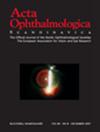Revisiting fuchs endothelial corneal dystrophy clinical classification using innovative high-resolution, far-red, reflexion free retroillumination
Abstract
Purpose: Fuchs endothelial corneal dystrophy (FEDC) is by far the most common corneal endothelial diseases in Western countries, and 50% of keratoplasties are carried out to treat endothelial diseases. New treatments are also emerging (Descemetorhexis only, rock-inhibitors, mTor-inhibitors, FGF-1). It will therefore soon be vital to be able to determine the stage of each patient in a simple and reliable way, in order to personalize treatment. Visual acuity, retroillumination, specular microscopy and thickness mapping are the 4 pillars of the examination. However, current retro-illumination images are of insufficient quality. Aim: to present the first series of FECD observed using new-generation retroillumination.
Methods: We developed a prototype retroilluminator by modifying a slit lamp with the aim of obtaining high-resolution images, without parasitic reflection and without dazzling the patient. We then prospectively photographed 200 FECD patients. The images were then classified by 3 independent observers according to the modified Krachmer classification, which is the most widely used in the literature: it distinguishes patients according to the number of Guttae, the size of the area of confluent Guttae and the presence of oedema.
Results: The prototype produced clear, glare-free images in over 95% of cases. Persistent reflections were observed exclusively in pseudophakic patients. The high resolution made it possible to observe all the Guttae and to challenge Krachmer's grade 2 classification (more than 12 non-confluent drops), which included a major diversity of patients, some of whom had thousands of non-confluent Guttae. We also highlighted for the first time to our knowledge 2 new elements: the high frequency of radial alignment of Guttae, often over 360°, and the presence of Guttae in the periphery of the endothelium, suggesting that a cell migration anomaly is involved.
Conclusions: Innovative retroillumination images challenge Krachmer's classification by providing exceptional precision. They will make it easier to distinguish between sub-groups of patients with different visual repercussions and evolutionary profiles. Easy to use, this new device should help to improve both our understanding of FECD and its routine management.

 求助内容:
求助内容: 应助结果提醒方式:
应助结果提醒方式:


